Circumstellar interaction in a thermonuclear supernova SN 2006X
|
Type Ia supernovae (SNe Ia) have been used extensively as cosmological reference beacons to trace the evolution of the universe due to their extreme luminosities and high homogeneity. However, despite recent progress, the nature of the progenitor stars and the physics that govern these powerful explosions remain poorly understood. In the presently favored single-degenerate model, the supernova progenitor is a white dwarf that accretes material from a nondegenerate companion star in a close binary system; when it approaches the Chandrasekhar limit, the white dwarf explodes in a thermonuclear blast. A direct method for investigating the nature of the progenitor systems of SNe Ia is to search for signatures of the material transferred to the accreting white dwarf in the circumstellar material (CSM). Previous attempts have aimed at detecting the radiation that would arise from the interaction between the fast-moving SN ejecta and the slow-moving CSM in the form of narrow emission lines, radio emission, and x-ray emission. However, so far no success has been obtained. SN 2006X was discovered in the Virgo cluster spiral galaxy NGC 4321. A few days after its detection, the object was classified as a normal SN Ia event occurring 1 to 2 weeks before maximum light, which was affected by substantial extinction. Prompt observations with the Very Large Array telescope have shown no radio source at the SN position, establishing one of the deepest and earliest limits for radio emission from a SN Ia and implying a mass-loss rate of less than a few 1E-8 solar masses per year. The SN was not visible in the 0.2-to-10 keV x-ray band observed by Swift satellite. |
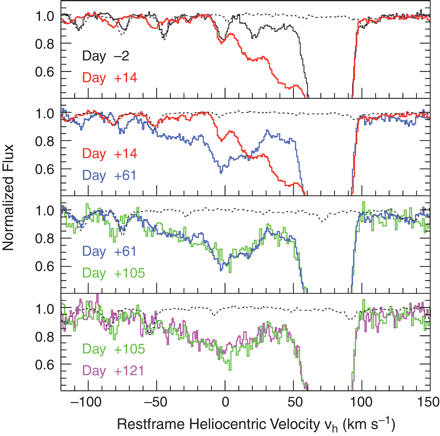
|
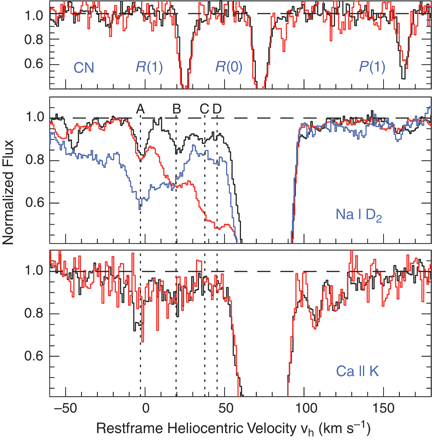
|
We have observed SN 2006X with the Ultraviolet (UV) and Visual Echelle Spectrograph mounted at the ESO 8.2-m Very Large Telescope at days -2, +14, +61, and +121 with respect to B-band maximum light. Additionally, a fifth epoch (day +105) was covered with the High Resolution Echelle Spectrometer mounted at the 10-m Keck telescope. The most notable finding from our data is the clear evolution seen in the profile of the Na I D doublet lines (5889.95, 5895.92 A). We conclude that Na I features seen in SN 2006X, arising in a number of expanding shells (or clumps), evolve because of changes in the CSM ionization conditions induced by the variable SN radiation field. The most important implication of these observations is that this CSM was ejected from the progenitor system in the recent past. For instance, with a shell radius of 1016 cm and a wind velocity of ~50 km/s, the material would have been ejected some 50 years before the explosion. This almost certainly rules out a double-degenerate scenario for SN 2006X, where the supernova would have been triggered by the merger of two carbon-oxygen white dwarfs. In this case, no substantial mass loss would be expected in the phase immediately preceding the supernova. Thus, a single-degenerate model is the favored model for SN 2006X, where the progenitor accreted from a nondegenerate companion star. |
Click in boxes below to see some highlights of our research work.
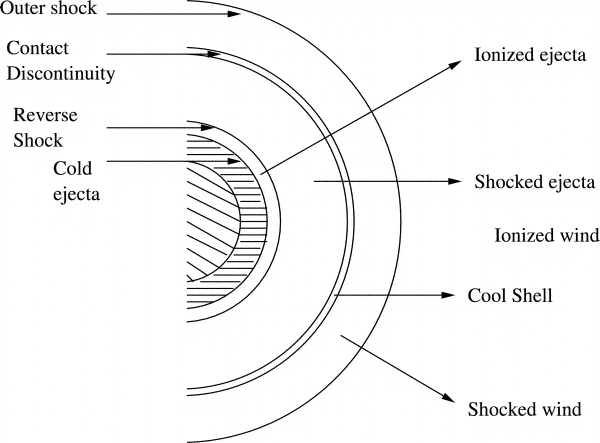
Type IIn supernovae are the most mysterious class of supernovae. Their progenitor stars are a big mystery....
Detail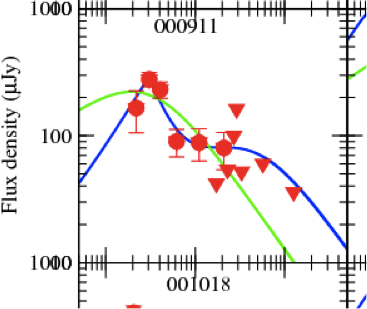
While reverse shocks are seen in one every 24 optical afterglows of gamma ray bursts, they are much more prevalent in radio afterglows...
Detail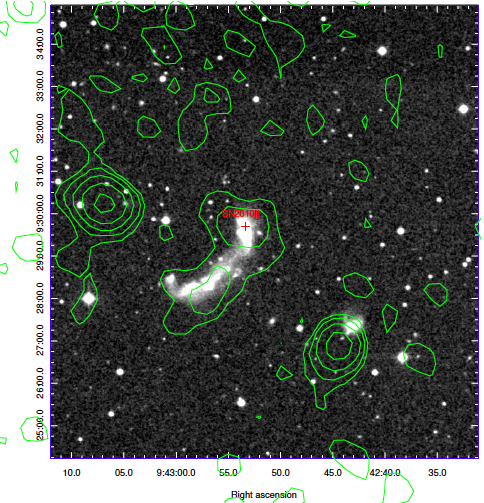
SN 2010jl have revealed a spectacular evolution of the column density from X-ray observations....
Detail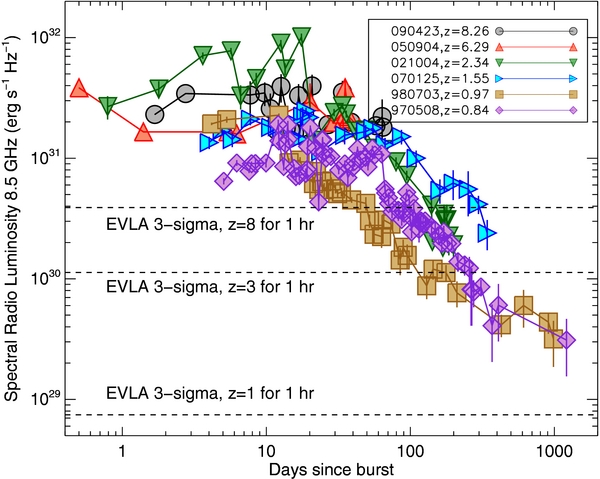
We have studied a catalog of radio afterglow observations of GRBs over a 14 year period from 1997 to 2011...
Detail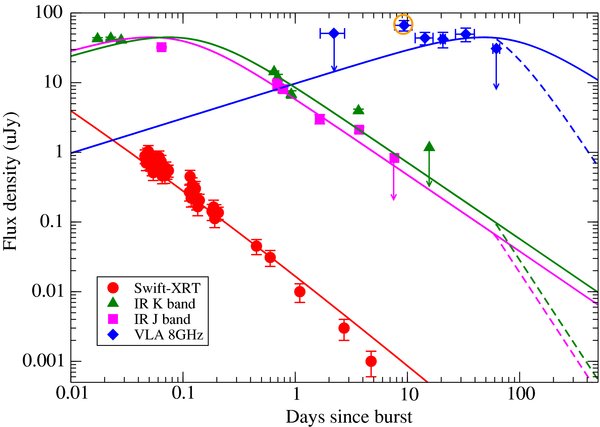
Radio detection of a redshift 8.3 GRB 090423 have revealed the environments of the Universe at such high redshift epochs...
Detail
Inverse Compton scattering can solve the famous mystery of lack of achromatic jet breaks in a subsample of Swift bursts....
Detail
First time spectroscopic evidence of circumstellar matter has been seen in a thermonuclear supernova...
Detail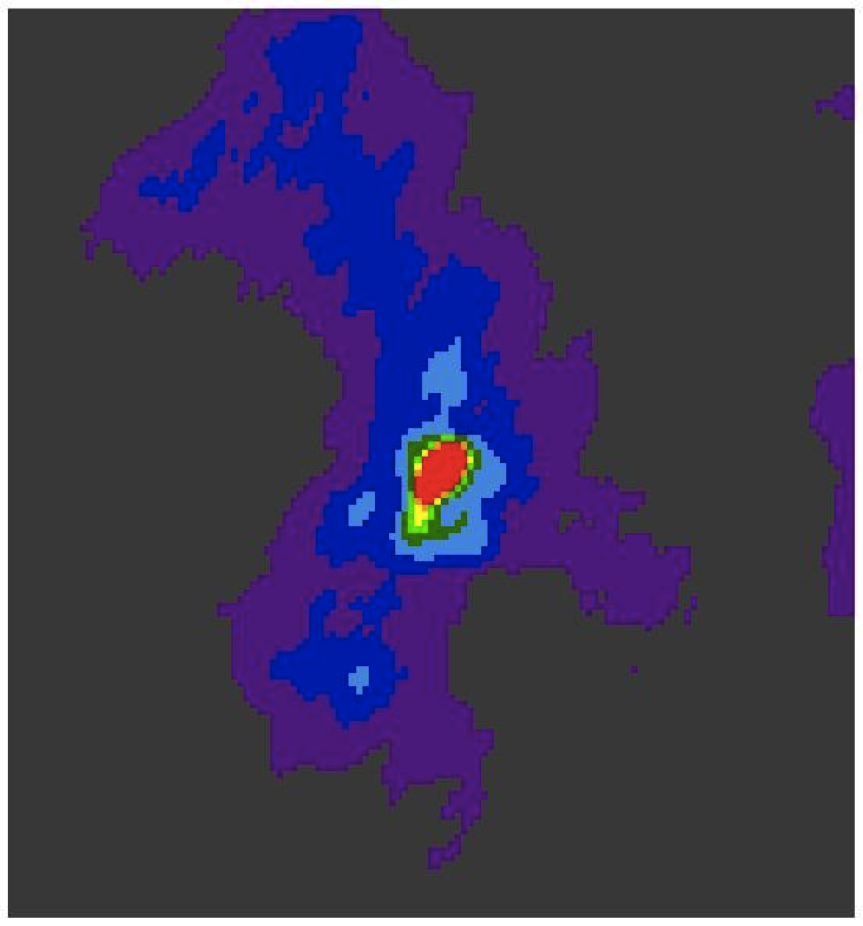
Lowest frequency radio emission at 125 cm has been seen in this most violent Galactic explosion .....
Detail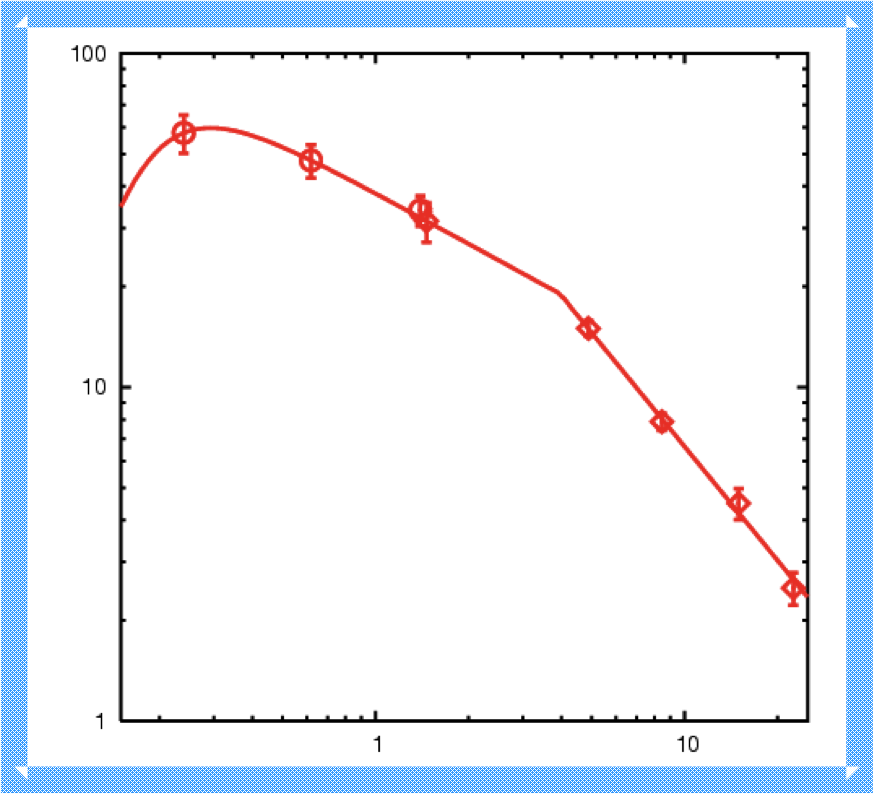
First time direct signature of synchrotron aging was seen in VLA and GMRT observations of SN 1993J.
Detail
